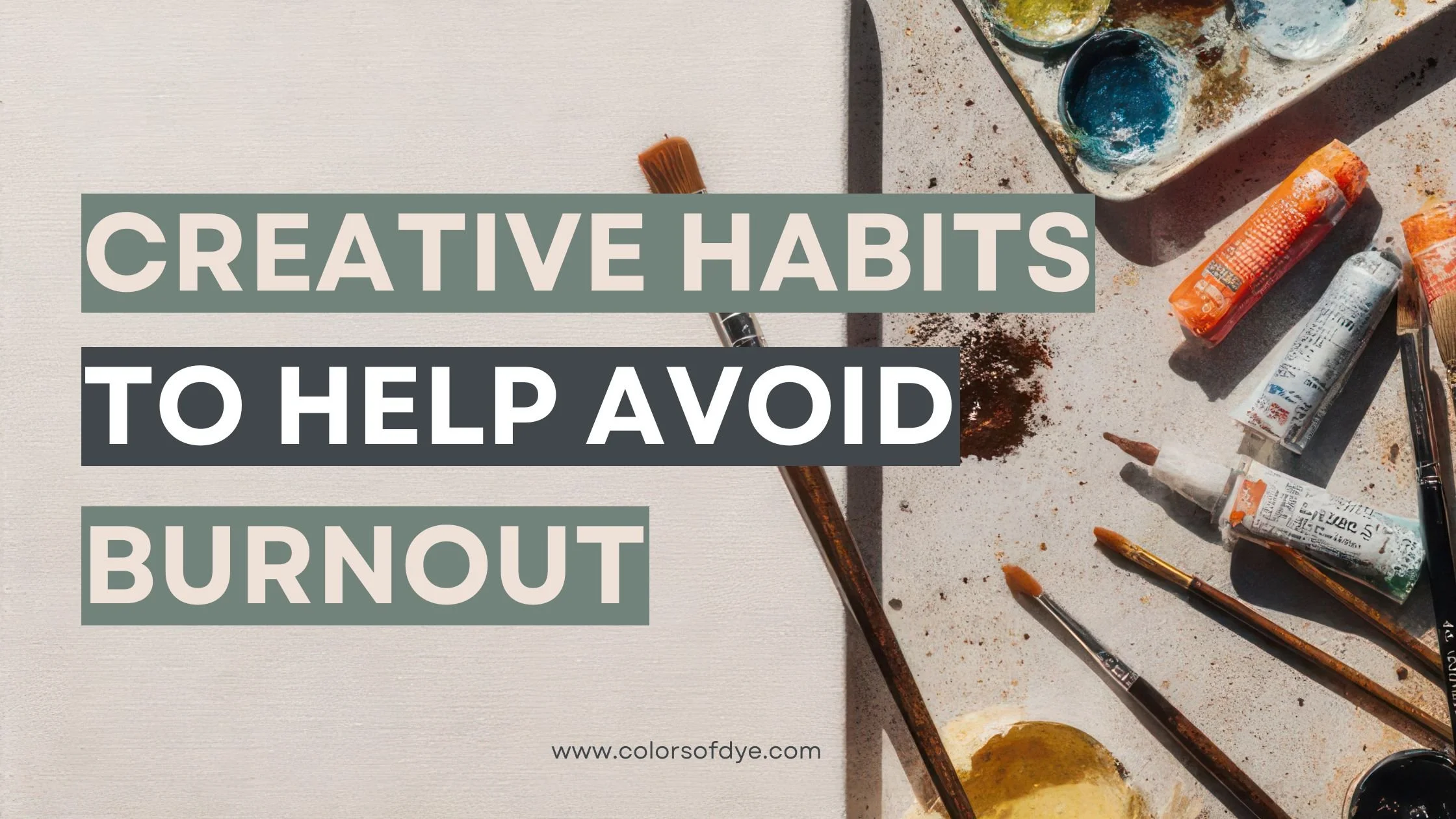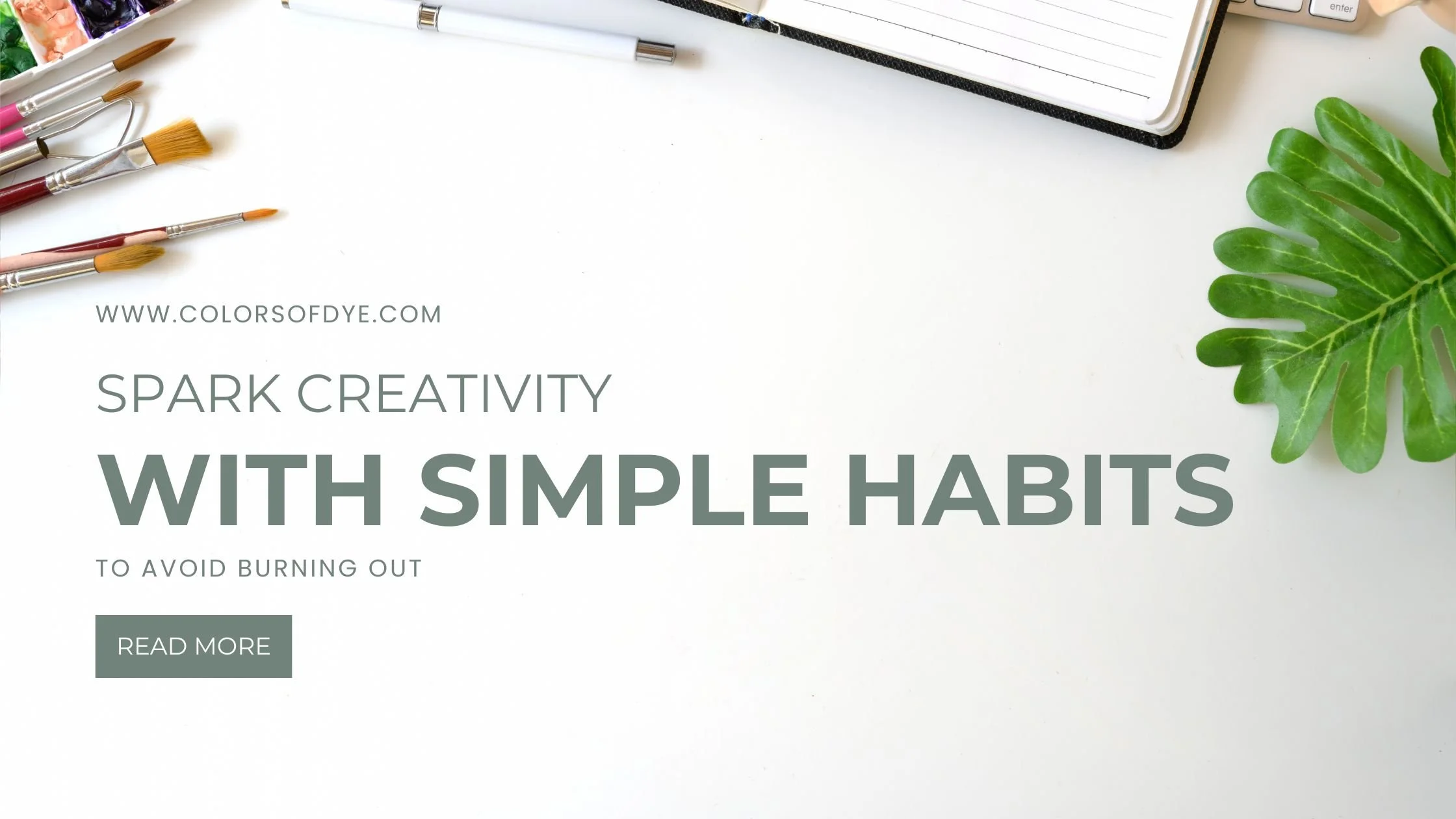How to Reignite Your Creative Spark (Even When You’re Exhausted)
Affiliate Disclosure: This article contains affiliate links through Amazon and other sites. I may receive a commission at no cost to you, should you decide to purchase through one of the provided links. I only share products I love.
Healthcare Disclaimer: This website is provided for educational and informational purposes only and is not to be considered as medical advice.
Tips for Maintaining a Creative Practice with a Chronic Illness
In 2022, a few years after being diagnosed with multiple sclerosis, I returned to school full-time to work on my Master of Arts in professional writing.
As I began my degree program, I focused on my creative habits, especially on how to maintain creativity and avoid burnout due to the unpredictable daily challenges of MS. This meant learning how to spark creative thought with small habits to help make and create, even when I don’t feel like I’m making it at the moment.
I’m still nowhere near where I want to be, but over the years, I’ve learned a lot about how to maintain creativity and chronic illness.
Here are some of my workarounds, simple strategies, and tools to help you create, even when tired or burnt out:
Slow Down
This sounds counterintuitive, right? Look around the world today, and everything is fast-paced. It’s easy to get caught up in the whirlwind!
Creative projects take energy. Plan to give yourself extra time, take frequent breaks, and break projects into manageable sections.
Don’t let others define you, and don’t define yourself by other people. This is your race, so run it at your pace.
Adapt Your Routine
Chronic illness challenges me in that it forces me to adapt and bend to its will - but so does making art and the process of creating.
Keep track of how you feel throughout the day and adjust your schedule to your needs. If the process isn’t working, why keep at it? Change one thing; it doesn’t have to be a big thing.
I know I am less productive as the day progresses, and the mornings are my best time to focus on difficult tasks. By adapting my schedule, I find I accomplish more.
Embrace Imperfection
Perfectionism is the antithesis of creativity.
It stops a person dead in their tracks, shifting the focus from the possibilities to the probabilities of mistakes. When working with little energy, perfectionism expends what little remains.
Embrace the imperfect.
Feel Free to Fail
Art isn’t perfect; it’s a process. Perfect your process.
In the world of social media, it’s easy to fall into the trap of the -ism: perfectionism, consumerism, etc.
Try to create without thought to help rebuild creative energy. This includes activities like freewriting, doodling, and junk journaling.
Reframe Your Thoughts
A fleeting thought zips through my mind every time I finish an essay. I try not to look in its direction, or I might hear it yelling louder, screaming, “Is this it?, as if my creativity is a finite resource.
In a way, chronic illness does the same. It’s like an imposing guest at a dinner party that won’t leave, and spends the night making snarky quips, trying to pull you down.
At the worst moments, I hear a whisper with rumblings of “I can’t.” An old basketball coach liked to say, “can’t never could do a gosh darn thing.”
That’s why it’s important to rein it in, reframing critical thoughts into more positive ones, realizing you are unique, with an interesting point of view and personal experiences.
Practicing creative self-care also means taking care of the beautiful mind behind the creations.
Make Your Creative Projects Easily Accessible
I like to be as prepared as possible when an idea or inspiration strikes.
The less time it takes to engage with your medium, the better. This is especially true when managing chronic illness, since our energy may be limited.
The way you store and organize your art supplies makes a difference, especially for those of us in smaller spaces.
In the coming weeks, I’ll be working on a roundup of some of the best art, craft, and office storage solutions for small spaces.
Absorb Art as a Part of Your Creative Routine
Throughout the animal kingdom, watching and observing remain some of the most powerful tools for learning. It’s a simple creative habit with profound results.
Inspiration comes from all around us.
Art helps build connections, creating unique associations between things, which is why I think it’s important to make absorbing art a part of your creative practice.
In college, I watched Tibetan Buddhist monks perform a sacred sand mandala ritual. For a week straight, the monks knelt over the ground, their orange robes tucked about them. Using metal funnels, each monk placed colored grains of sand in an ornate and vibrant pattern. At the end of the week, the monks swept up their mandala and symbolically disposed of it in water. Now, when I think of sand, I think of these vibrant, geometrical patterns.
I challenge you to explore new disciplines and search for inspiration in unlikely places.
Play & Imagine
Picasso once said, “Every child is an artist. The problem is how to remain an artist once we grow up.”
Every year, a local art museum hosts an exhibition featuring the work of K-12 students from around the state. Year after year, I leave amazed at the quality of entries and their creativity. One year, a class built an entire room, with desks and a podium, made from Crayola crayons.
Reignite your creative spark by making, playing, and imagining fearlessly like children. Finger paint, get some playdough, get messy - dream and create!
People Watch & Listen
Earlier, I wrote about how inspiration can come from unlikely places. People watching is one of my favorite activities to help generate new creative ideas.
Sitting in my car in a hospital parking lot with the windows cracked, I heard the most memorable line of dialogue. As footsteps approached, a woman’s voice with a frantic edge said, “And then he drank twelve Dr. Peppers!”
That’s all I heard, but it fascinated me, so I wrote it down, later using it as the basis of a scene for a creative writing assignment.
Watch and listen to the world around you and keep note of the people, things, thoughts, and ideas that interest you.
List-Making and Gratitude Keeping
My long-form essays usually start from lists, words, and snippets of ideas. Listmaking also forms a type of snapshot of who you are in the moment. It’s interesting to look back years later at thoughts, ideas, and goals from previous years.
To me, an important part of listmaking includes gratitude keeping, which relates to suggestion five, reframing your thoughts. Research shows gratitude helps reduce anxiety and depression while improving your sleep, all of which boost heart health.
For those of us managing creativity and chronic illness (or just focusing on self-improvement), it’s important to stay on top of our physical and emotional well-being.
To get started, I created a 30-Day Creative Reset Journal, which includes a section on gratitude. Get it for free here!
Creative Exercises
Taking a break to work on creative exercises and rebuild creative energy allows you to grow as an artist.
Illustrator and fellow creative Lorna Scobie developed a wonderful series of creative prompts for artists. When I’m struggling with creative block, a favorite resource I turn to is her book 365 Days of Art in Nature.
You can also download my free Creative Reset Journal. It’s a month of creative prompts divided into themes to help analyze and improve your creative process.
Create Something for Someone Else
This closely relates to both gratitude keeping and reframing.
Creating something for someone else changes the focus and motivation for creating, may give a boost of energy, and, at the very least, brings some positivity into the world.
If you are feeling stuck in a creative rut, I made a free Creative Reset Journal. It includes a month of creative prompts to help examine your process, goals, ideal routine, and more.
I’d love to hear the ways you manage your creative process and chronic illness!



